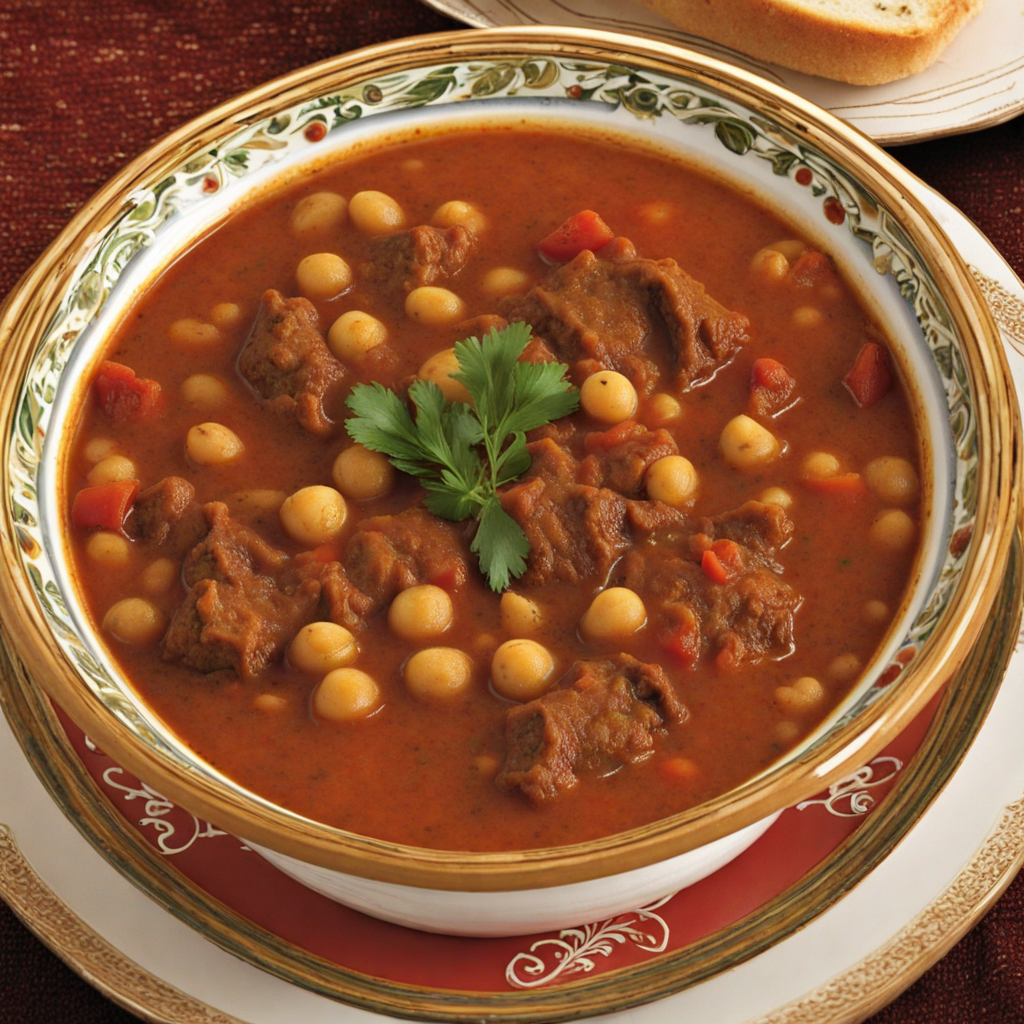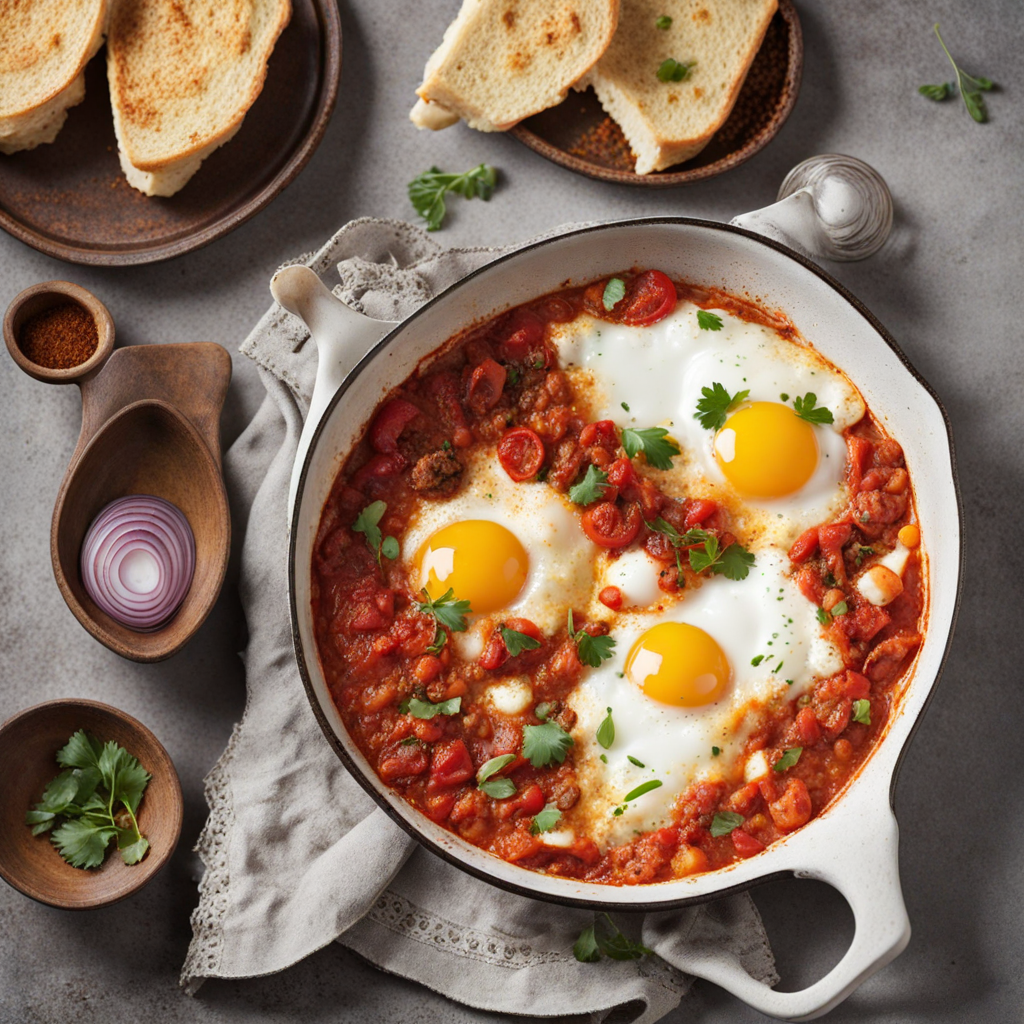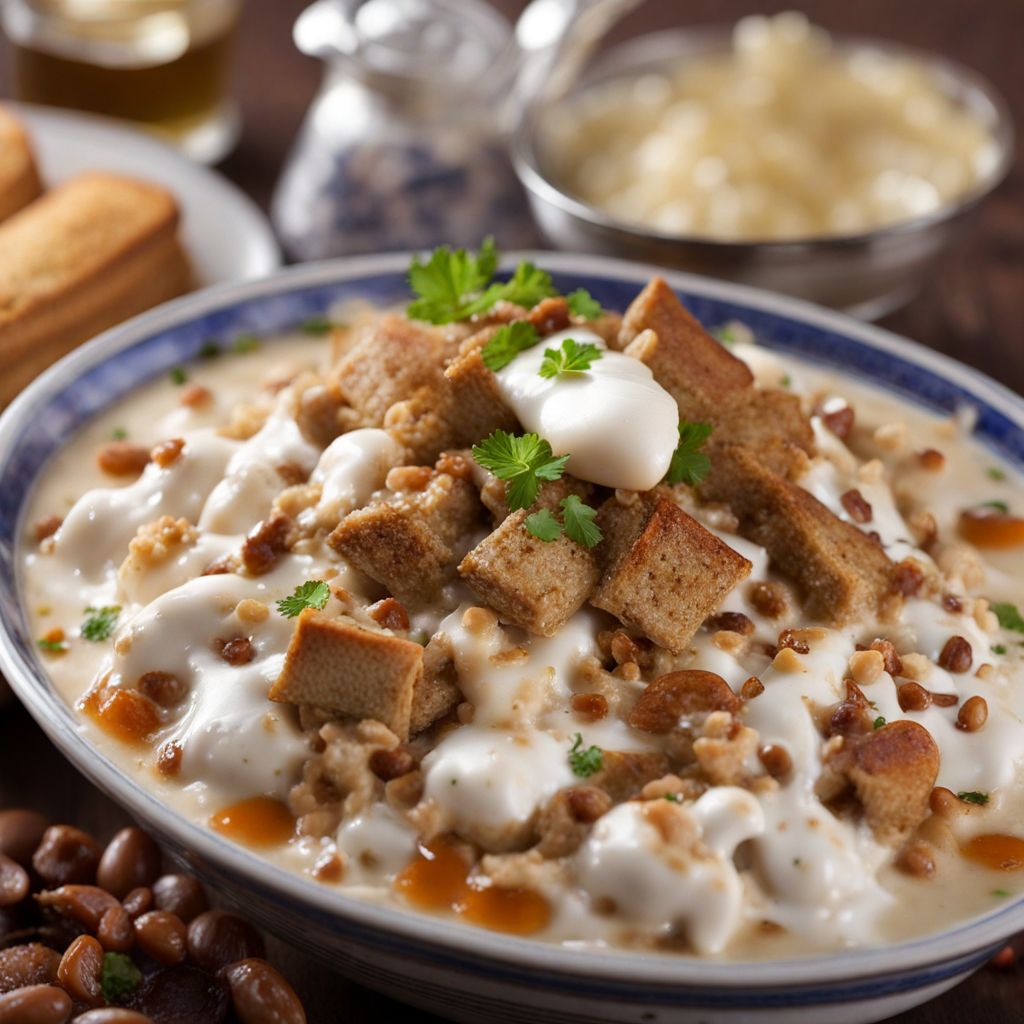Sharba Libiya
Sharba Libiya is a delightful Libyan dish that embodies the rich culinary heritage of the region. This aromatic soup is typically made with a base of tender lamb or chicken, simmered to perfection with an array of spices that include cumin, coriander, and cinnamon. The use of fresh herbs like cilantro and parsley adds a vibrant touch, while the inclusion of vegetables such as carrots, potatoes, and tomatoes creates a hearty and satisfying meal. The broth is often thickened with a touch of flour or semolina, giving it a unique texture that complements the tender meat and vegetables beautifully. One of the standout features of Sharba Libiya is its distinct flavor profile, which balances warmth and earthiness with a hint of sweetness from the spices and vegetables. The dish is usually served with pieces of crusty bread, perfect for soaking up the rich broth. This communal aspect of sharing a bowl of soup brings people together, making it not just a meal, but a cherished experience that reflects the hospitality of Libyan culture. The soup is often enjoyed during special occasions or family gatherings, symbolizing unity and tradition. As you take your first spoonful of Sharba Libiya, you will be greeted by a medley of flavors that dance on your palate. The warmth from the spices warms your soul, while the tender meat and vegetables provide a satisfying bite. Each bowl is a testament to the love and care that goes into Libyan cooking, inviting you to explore more of the diverse and flavorful dishes that this North African country has to offer. Whether you are enjoying it on a chilly evening or as part of a festive gathering, Sharba Libiya promises a culinary journey that you will not soon forget.
How It Became This Dish
Origins of شربة ليبية شربة ليبية, or Libyan soup, is a traditional dish that has its roots in the rich and diverse culinary history of Libya. The origins of this dish can be traced back to the ancient Berber tribes that inhabited the region, who utilized local ingredients and spices to create nourishing and flavorful meals. Over centuries, the geographical location of Libya, which bridges Africa and the Mediterranean, facilitated the exchange of culinary practices with neighboring cultures, including the Romans, Arabs, and Italians. This cultural fusion has played a significant role in shaping the ingredients and preparation methods of شربة ليبية. The base of شربة ليبية is typically a hearty broth made from meat, often lamb or chicken, combined with a variety of vegetables such as carrots, potatoes, and tomatoes. The use of spices is a hallmark of Libyan cuisine, and شربة ليبية is no exception, featuring aromatic spices like cumin, coriander, and cinnamon. The soup is often thickened with the addition of flour or semolina, creating a comforting and filling dish that reflects the need for sustenance in the arid Libyan climate. \n Cultural Significance In Libyan culture, شربة ليبية holds a significant place in both daily life and special occasions. It is a staple dish that is often served during family gatherings, weddings, and religious celebrations, symbolizing hospitality and community. The act of preparing and sharing this soup reflects the values of togetherness and generosity that are deeply embedded in Libyan society. The preparation of شربة ليبية can be seen as a rite of passage, especially for young women learning the traditional culinary skills passed down through generations. Families often have their own variations of the recipe, which can include different vegetables or spices based on personal taste and regional availability. This adaptability allows each family to infuse their own history and memories into the dish, making it a personal and cherished part of their identity. \n Development Over Time As Libya underwent various political and social changes throughout the 20th century, the culinary landscape also evolved. The influx of foreign influences, particularly during the Italian colonization in the early 1900s, introduced new ingredients and cooking techniques. This period saw the introduction of pasta, which has since been incorporated into some modern interpretations of شربة ليبية, reflecting a blending of culinary traditions. In contemporary Libya, شربة ليبية continues to be a beloved dish, with many families adhering to traditional methods of preparation while also experimenting with new ingredients. The rise of globalization has led to an increased interest in Libyan cuisine, with chefs and home cooks alike seeking to revive and modernize classic recipes. This has resulted in a proliferation of variations of شربة ليبية that cater to diverse palates while remaining true to its roots. \n Ingredients and Preparation The traditional preparation of شربة ليبية typically begins with the selection of the main protein, often lamb or chicken, which is simmered with onions and garlic to build a flavorful base. The addition of fresh vegetables, such as carrots, potatoes, and green beans, brings both nutrition and color to the dish. Spices are key to achieving the distinctive flavor profile of the soup; a combination of cumin, coriander, cinnamon, and sometimes even a touch of chili powder is used to season the broth. To thicken the soup, a mixture of flour and water is often added, creating a smooth and creamy texture. Some families may also include rice or pasta, which adds heartiness to the dish. The soup is usually served hot, garnished with fresh herbs like cilantro or parsley, and accompanied by crusty bread, which is perfect for dipping and soaking up the delicious broth. \n Modern Variations In recent years, the global culinary scene has seen a resurgence of interest in traditional dishes from around the world, including شربة ليبية. Chefs and home cooks in Libya and the diaspora are experimenting with the recipe, incorporating local and seasonal ingredients to create innovative twists on the classic soup. Some variations may include the use of quinoa or lentils as a protein source, catering to vegetarian and health-conscious diners. Additionally, the presentation of شربة ليبية has evolved, with modern plating techniques elevating the dish to a more refined dining experience. While the traditional communal serving style remains prevalent, individual portions are increasingly common in restaurants, allowing diners to appreciate the flavors and textures of the soup in a contemporary setting. \n Conclusion and Future of شربة ليبية As Libya continues to navigate its complex social and political landscape, the culinary traditions that define its identity remain resilient. شربة ليبية stands as a testament to the country's rich history and the enduring significance of food in fostering connections among people. With the ongoing evolution of this beloved dish, it is likely to adapt and thrive in the modern culinary world, ensuring that future generations will continue to enjoy and celebrate its flavors and cultural heritage. The resurgence of interest in Libyan cuisine, both within the country and internationally, presents an opportunity for شربة ليبية to gain recognition on the global stage. As chefs and food enthusiasts explore the intricacies of this dish, they contribute to a broader appreciation for Libyan culture and its culinary contributions, fostering a renewed pride in the rich tapestry of flavors that define this ancient land.
You may like
Discover local flavors from Libya







